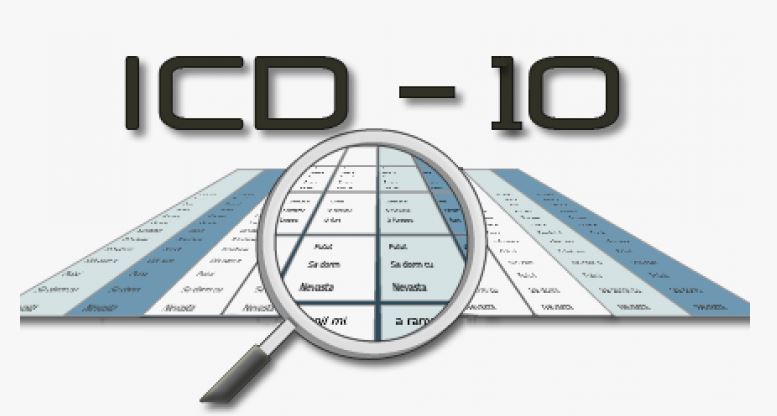The FY 2025 ICD-10-PCS code updates include changes to procedure codes, which are critical for medical billing, reporting, and documentation. New codes are frequently added, old codes are revised, and old codes are deleted in major upgrades. These changes are usually driven by advancements in medical technology, new procedures, and updates in clinical practices.
Major Modifications for FY 2025 ICD-10-PCS Code:
The FY 2025 ICD-10-PCS code updates include several new codes, revisions, and deletions across various procedure categories.
New Codes: New medical technology and procedures are addressed by the creation of new procedure codes. For instance, new codes for minimally invasive procedures and sophisticated robotic-assisted surgeries have been added.
Revised Codes: Updated clinical practices have led to revisions to several of the current codes. This involves updating code descriptions or providing usage clarifications.
Deleted Codes: Some codes have been removed because they are no longer necessary or have been replaced by more focused ones.
Revisions to Orthopedic and Cardiovascular operations: In light of new therapeutic possibilities, there have been substantial revisions to orthopedic and cardiovascular operations.
Technology Updates: New codes have been added for operations involving sophisticated medical equipment, like implanted gadgets and bioengineered goods.
Clarifications: Updates also provide information on how to use current codes correctly, particularly in complicated procedures.
FY 2025 ICD-10-PCS Code Updates include 371 Additions & 61 Deletions:
A thorough appendix detailing the revisions for the upcoming fiscal year, including index, reference, and table addenda, has been provided along with the FY 2025 ICD-10-PCS code updates. Notably, as of October 1, 2024, the Official ICD-10-PCS Coding Guidelines remain unchanged. There are 78,948 ICD-10-PCS codes in the FY 2025 code set after 61 codes were deleted and 371 new codes were added. The new codes go into effect on October 1, 2024.
Also Read:
- Difference between ICD 9 and ICD 10 Codes
- FQHC Medical Billing
- Maternal – Fetal Medicine Billing and CPT Codes
Updates for Medical and Surgical Section:
One of the primary features of the ICD-10-PCS system is its ability to add fresh code tables and character values to previous tables rapidly reflecting activities completed via upgraded codes. The 2025 code set contains a large number of these changes. A novel code for brain mapping using Connectomic Analysis and a code for Stereoelectroencephalographic Radiofrequency Ablation are included in the Medical and Surgical area. In addition to adding a qualifier for lower arteries to the Bypass table for the liver and renal arteries, a new code table was created for the bypass in the circulatory and hemic systems. New codes were generated in the Medical and Surgical area for the dilation of various body sections, with the qualifier sustained release, replacing the existing New Technology X codes for dilation of specific lower arteries.
In the Hepatobiliary System and Pancreas body system, the modifications added method value 8 via either a natural or robotic incision endoscopic for the Elimination and Review tables for the human part values of the gallbladder and pancreas. This will make it possible to code operations like the revision and removal of lumen-apposing stents (LAMS) from these regions. The 2025 changes introduced a valid value for the Lumbar Artery Perforator (LAP) Flap in the Replacement table for the breast body parts autologous tissue replacement device in order to record these types of breast reconstruction surgeries. The external fixation device value has been included in the elimination and Revise tables for the nose and facial bone body parts in the Head and Facial Bones body system in order to classify these types of surgeries.
Updates for Sections Associated with Medicine and Surgery:
In the Extracorporeal Assistance for Medical and Surgical Related Sections, a new qualifier for peripheral veno-venous is introduced for intraoperative circulatory cleaning employing devices such as the AngioVac for the treatment of venous thromboembolism. The Fiberoptic 3D Guided Procedure has a new device value added to the Other Procedures section for the circulatory body area. The endovascular repairs made using tools like the LumiGuide now have an additional code added to it.
Updates for the New Technology Section:
The majority of the modifications for FY 2025 are in the New Technology X Section. A couple of these improvements include the insertion of new codes for intraluminal bioprosthetic leaflet splitting technique for division of the aortic valve and radiofrequency ablation for destruction of renal sympathetic nerves. The gyroid-sheet lattice design that stabilizes the ankle and hindfoot is a novel device value for ankle joint fusion, and it also represents a new device value for skin replacement utilizing genetically modified autologous cells. As in previous years, new codes for the monitoring and measurement of the circulatory and central nervous systems have been introduced, along with a number of therapeutic compounds that have been included to the Introduction and Transfusion code tables in the New Technology section.
Conclusion:
Medical practices will need to get ready for the October 1, 2024, deadline for implementing the FY 2025 ICD-10-CM diagnosis codes. It helps to maintain clean claims and efficient revenue flow to train coders, physicians, and other stakeholders on these changes.









